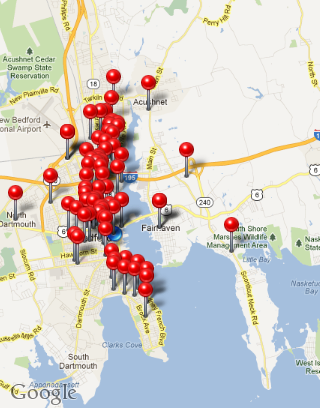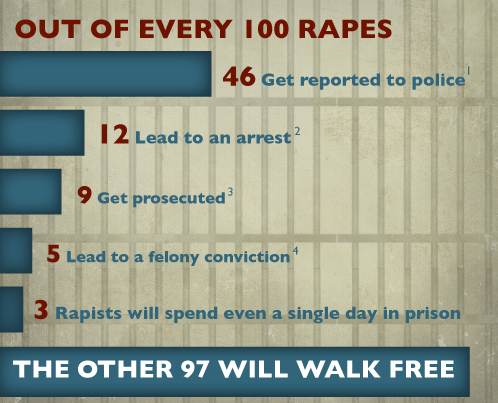New Bedford, a Magnet for Sex Offenders?

Would you invite a convicted sex offender that you’ve never met to your house for dinner with your wife and kids? No? How about inviting them to become your neighbor? Or a resident of your city? You may not be inviting sex offenders to your neighborhood, but as a city, New Bedford is doing just that that through handouts and a passive court system.
According to the National Alert Registry, there are over 374,000 convicted sex offenders in the United States. The problem with this number is only 1/2 of those sexually assaulted report their crime and that number is likely conservative. Taking that into account, there are likely 500,000 to a million sex offenders in America today. Other organization report as many as 637,000, so these numbers are likely much higher!
According to the Massachusetts’ Public Safety website, there are 95 sex offenders in New Bedford (as of 10 Sep, 2012), but only 3 in Fairhaven. That’s more than a 31 to 1 ratio of sex offenders that reside in New Bedford compared to Fairhaven, even though New Bedford only has 6 times the population (95,000 compared to 15,000). Compared to Dartmouth’s 5 sex offenders, New Bedford had 19 times the offenders with less than three times the population (95,000 to 34,000). Comparably, with 88,857 residents, Fall River has roughly the same size population as New Bedford , but has 110 sex offenders in their city. Taking these stats into account, there must be a reason why so many sex offenders reside in cities like New Bedford and Fall River, but avoid towns like Dartmouth and Fairhaven.

If we take into account that 1/2 of sexually assaulted victims don’t report the crime, this would mean there are likely about 200 sex offenders residing in New Bedford today. That doesn’t include the unregistered sex offenders. According to a 2003 report by the Justice Department’s Bureau of Justice Statistics, 5.3% of sex offenders were rearrested for another sex crime within 3 years of being released. This means that of the likely 200 sex offenders in New Bedford, 10 will likely commit a sexual assault again within 3 years of being released. The number gets much higher once you account for crimes after three years and there are studies that report long-term recidivism rates at 43% to 88%.
The obvious question that comes to mind is, why do sex offenders live in or migrate to cities like New Bedford and Fall River, but not towns like Fairhaven and Dartmouth? It’s not easy to distinguish between sex offenders that grew up in New Bedford or those that moved to New Bedford after being released from prison. Here are the reasons I feel New Bedford attracts so many sex offenders.
1. Low Rent – According the City government, 22,770 residents New Bedford were defined as “low-income” with 5,164 living in affordable housing units provided by the government. Section 8 vouchers and state MRVP vouchers provided rental assistance for another 1,739. What’s my point? When a sex offender comes out of prison, he (or is rare cases she) likely doesn’t have a lot of money and needs to live where the rent is cheap, or where the government can provide him housing. High rent prices and the lack of government assistance in towns like Marion, Fairhaven, Dartmouth simply place housing out of reach to most people leaving prison.
State and federal government housing programs do help New Bedford residents in critical need of affordable housing, but the programs also attract the neediest from other towns and cities. In the migration of perfectly fine, less fortunate citizens are criminals that simply can’t afford to live anywhere else. Besides attracting the wrong kind of citizens, this migration puts a strain on scarce resources. “State and federal housing policies and other government subsidies are effectively encouraging a dependent population to migrate here from elsewhere. Their decision to locate here rather than elsewhere places a tremendous demand on a variety of city services including our schools and public safety agencies,” said New Bedford Mayor Jon Mitchell.
2. Free Food – New Bedford also has tons of government services, food/homeless shelters and other organizations that provide meals daily. You do NOT have to be homeless to use these services. For example, Our Lady’s Chapel in Downtown New Bedford provides several meals a day to anyone that shows up to their door at scheduled times. Several organizations provide a free meals for anyone that shows up to their kitchen. These are all great organizations that provide caring services, but they also ensure people with limited income move to New Bedford instead of an area without government housing/assistance and services. I’m not saying that all homeless or impoverished people are sex offenders, but almost all sex offenders that come out of prison have few means to take care of themselves, and they won’t go hungry in New Bedford. While with good intention, the government and other organizations set up to help the poor and homeless, in fact attract many sex offenders to New Bedford.

3. Catch and Release – Our court system doesn’t take unregistered sex offenders seriously. By law convicted sex offenders must register their address with local law enforcement. Just a few weeks ago the New Bedford police arrested someone for having an open alcoholic beverage in public. The man turned out to be an unregistered sex offender. The New Bedford Police Department processed the man, but the court released the man onto our streets the very next day. I talked to the leadership at our downtown New Bedford Police Department and they stated that this catch and release policy is common practice. Our courts should be here to protect us and take sex offender registry laws seriously, but for whatever reason they fall short. Overall, our court system fails women that are sexually assaulted. The Rape, Abuse & Incest National Network, (RAINN) reports that only 3 of 100 rapist ever spend a single day in prison (see graphic).
4. Weak Sexual Assault Outreach Programs – This is a national problem that is not exclusive to New Bedford. If 50% of sexual assaults go unreported, then there is obviously a barrier for victims to report the crime against them. Common sense tells you that if sex offenders are allowed to get away with their crime, they will likely become repeat offenders. Fear and the lack of information will cause a victim to keep their crime silent. New Bedford does have great organizations like The Women’s Center, but as a city we can do more. Sexual assault victims must feel that they can be removed from their hostile environment after reporting their crime and that the courts will punish the offenders. Victims must be provided with the information needed to report the crime and be armed with the local resources available to them.
Final Thoughts
The vast majority of people living in low income conditions are not sex offenders, but statistics show that most sex offenders are attracted to places of low rent or government provided housing. How do we ensure New Bedford is not a magnet to sex offenders? First, we need to stop providing resources that welcome them to our city. It’s great that local organizations provide a hot meal and bed to those in need, or our government takes care of our poorest with housing and services, but we need to do it in a way that doesn’t invite sex offenders to come live in our city. Second, we need a court system that punishes sex offenders that do not register their address. It’s the law and we have a right to know if a sex offender is living next door to us. Finally, we need to arm EVERYONE with the knowledge of how to report a crime and where to find resources. We should strive to be a city that doesn’t attract sex offenders, works to make sure no crime goes unreported and prosecute the offenders to the fullest extent possible.
References